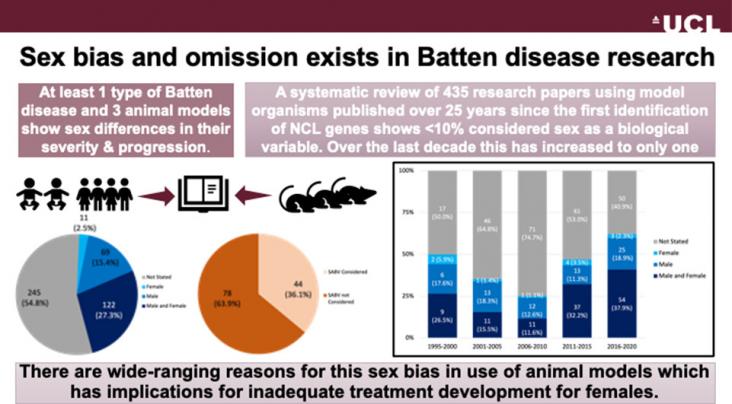This chapter advances the UN SDG Goal 3: Good Health and Goal 10: Reduced Inequalities by outlining the approaches that can be broadly applied to improve health equity and reduce disparities in perioperative care.

Batten Disease is a rare disease. This reviews highlights the existing sex bias and omissions in Batten Disease research.
The Sepsis Codex: Chapter 27 - Factors Underlying Racial and Gender Disparities in Sepsis Management
The Sepsis Codex, 2023, Pages 247-255
This chapter advances the UN SDG Goal 3: Good Health and Goal 10: Reduced Inequalities by reviewing several patient, hospital, and community-based factors that promote racial and gender disparities in sepsis.
This content links with Goal 3: Good health and well-being and Goal 10: Reduced Inequalities by outlining the state-of-the-art regarding the genetic architecture of PBC and thoughtful reflections on the limitations of current genetic methods
This content links with Goal 3: Good health and well-being and Goal 10: Reduced Inequalities by highlighting advanced imaging and wrist arthroscopy for accurate staging and selecting of appropriate treatment.
This Personal View supports SDGs 3 and 13 by reviewing the ways that climate risks affect all aspects of the COVID-19 pandemic, including transmission, perception, and response. The authors highlight the importance of considering climate risks in relation to COVID-19 response measures.
Negative attitudes toward mental illness and treatment are attributed to a lack of or inaccurate mental health knowledge.
Background: There is an urgent need to reduce the burden of depression among older adults in low-income and middle-income countries (LMICs).
Elsevier,
Maternal Cardiac Care
A Guide to Managing Pregnant Women with Heart Disease
2023, Pages 78-82
This content links with Goal 3: Good health and well-being and Goal 10: Reduced Inequalities by providing underlying pathophysiology, risk factors, and early warning signs of peripartum cardiomyopathy.
This Article supports SDG3 by evaluating whether planned improvements in care equity for hip replacements in England and Wales have been successful.
